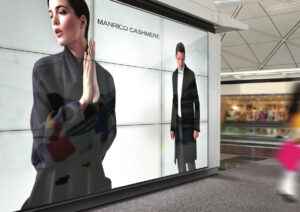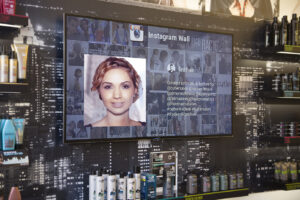Co-Authored by: Rebecca Dowden, Director of Marketing at CrownTV & Steven Picanza, Director of Marketing at OpenEyeGlobal
Brands not adapting to the ‘era of experience’ will be left behind in 2018.

A bold statement, but the realities on the other side of that statement are even harsher. It goes without saying that the most successful companies don’t just create a brand identity, they create an adaptable brand experience.
As 2017 quickly turns into 2018, brands of all sizes are going to be auditing their current marketing and branding initiatives and looking to see where immediate improvements can be made and where long-time investments can help move the needle.
One investment brands are making to enhance brand experience is in digital signage. Digital signage is a massive industry expected to be worth over 32 billion by 2023 and as with all rapidly growing technology, brands need to be ready to adapt. TechCrunch said it best,
“A global arms race is underway”
Brands are no longer competing to be the first to simply adopt the latest technology, they are now competing to use the new technology to create the best digital experience for their customers.
For brands, digital signage is an easy-to-adapt and quick-to-launch way to create digital experiences. These digital experiences not only catch consumer’s attention, they foster engagement and interaction with a brand. And these consumer-brand interactions are the first stop toward a fully immersive digital experience.
Traditionally, digital experiences referred to customer’s interaction with a brand online. These interactions have evolved from websites to social media to mobile – but what’s next?

Creating immersive and adaptable brand experiences don’t just happen online. Sure, so much of our shopping preferences come from online ads and content, but thinking it starts and ends there is lazy. Don’t believe me?
Why are 9 out of 10 of the top retailers in 2017 brick and mortar locations?
Brick and mortar locations, while reinventing themselves almost daily, will never be absolute. We will never live in a world where we can’t say “I’m just going to run to the store for a bit.” What brands need to realize is just like the internet made us reevaluate our marketing and advertising spend and mix; eCommerce is making us reevaluate our digital and physical mix.
This is where digital signage comes into play.
Digital signage is a tool that allows marketing content to be displayed on digital screens in retail locations. The content on these screens can range from sales promotions to videos, even to social media hashtag walls.

Plus, with remote content management and scheduling, brands can control dozens of screens seamlessly from one computer. Digital signage is a way to start creating digital experience immediately.
As an extension to your brand, digital signage inside your physical location is able to adaptively showcase key brand messaging and visuals to help further channel your customer down your sales or customer funnel. The best brands, like Santander Bank for example, leverages digital signage for that very reason as well as other such as
– New creative is inexpensive to create: When compared with billboards or traditional print, digital signage is much more cost effective.
– Minimize wait times while running time-sensitive ads: Imagine being able to have a captive audience where you’re able to serve them ads they are specifically looking for.
– Reduce costs, increase profits: From cutting down on paper and administrative tasks to being able to run promotions and specials, the business case surrounding digital signage is extremely strong.
Digital signage is also a flexible tool that can be used to create relevant experience in a variety of industries.
For banks, such as Santander, digital signage can bring digital experiences into your waiting area with content such as personal finance tips, money trivia and promotions for credit card reward programs. However, for beauty retailers such as Redken, the same digital signage tool can be used in-stores to display content such as product demo videos, ingredient information, and top Instagram posts.

The applications of digital signage are almost endless but the common goal is the same: create a digital experience. And these digital experiences created with digital signage can and will translate into memorable brand experiences.
In conclusion, creating memorable experiences is the future of branding. While campaigns may come and go, experiences can live forever in the mind of your customers. To build these experiences, brands need to employ technology like digital signage to create digital experiences. In-store digital experiences will have higher engagement and customer satisfaction than traditional ads and signage. And once customers are more engaged, they are more likely to have a positive brand experience.
Find out more information about digital signage and how your brand can begin your digital experience strategy.

